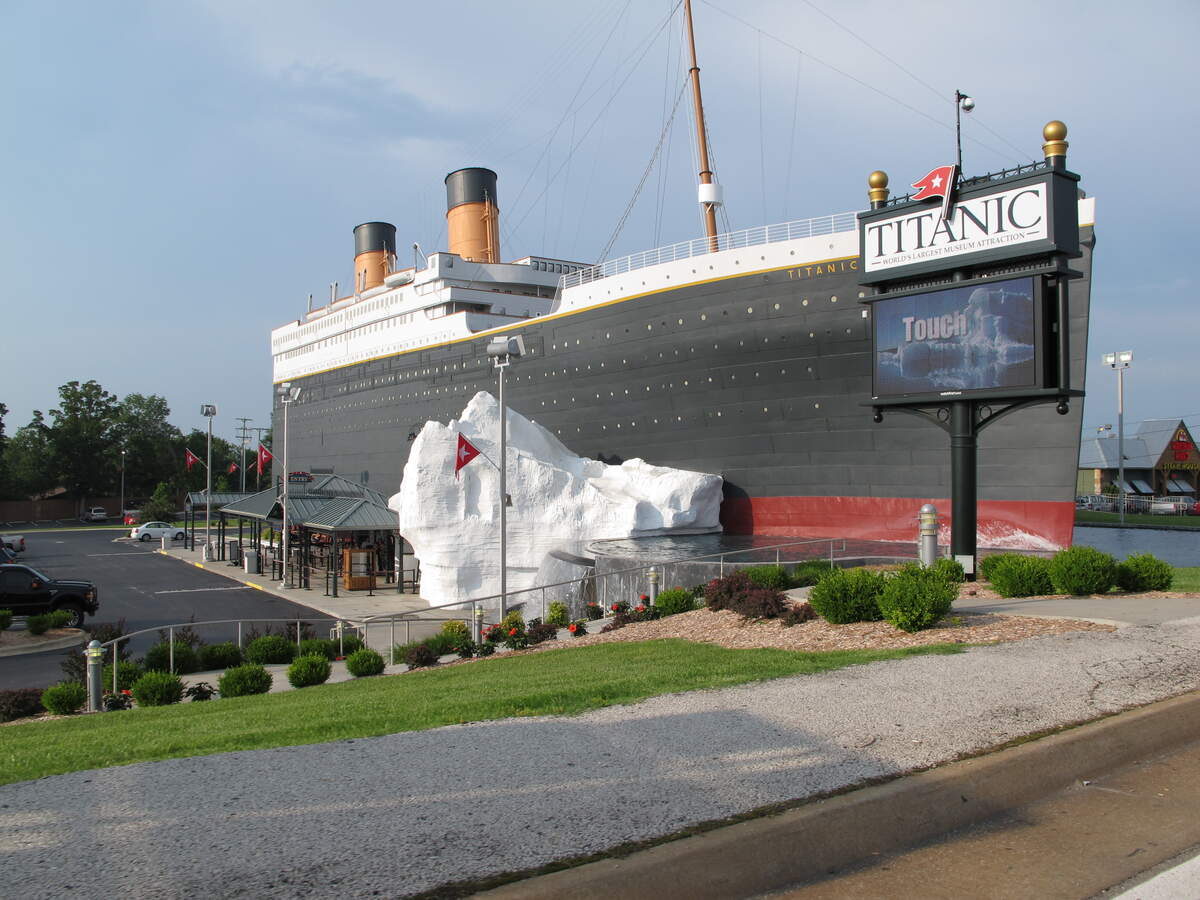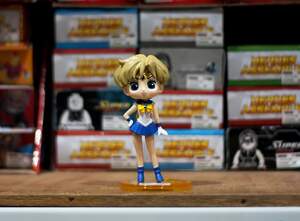

Titanic Remembrance Day
Observed
annually on April 15th (since 1913)
Dates
Hashtags
Sources
https://economictimes.indiatimes.com/news/new-updates/national-titanic-remembrance-day-all-you-need-to-know/articleshow/99511318.cms
https://www.britannica.com/topic/Titanic
https://www.history.com/topics/early-20th-century-us/titanic
https://www.holidayinsights.com/moreholidays/April/titanicday.htm
https://www.anrdoezrs.net/links/100298379/type/dlg/https://www.newspapers.com/image/881019274/
https://www.anrdoezrs.net/links/100298379/type/dlg/https://www.newspapers.com/image/976851506/
https://www.noaa.gov/gc-international-section/rms-titanic-history-and-significance
https://www.usda.gov/media/blog/2022/04/15/titanic-agricultural-statistics
Titanic Remembrance Day honors the memory of the RMS Titanic, a British luxury ocean liner, and the more than 1,500 crew and passengers who lost their lives when it sank on today's date in 1912. At the time of its sinking, the Titanic was the largest and most luxurious ship in the world. The sinking is one of the deadliest peacetime disasters and one of the most well-known shipwrecks of all time.
The Titanic was built by the Harland & Wolff shipyard in Belfast, Ireland. Thomas Andrews, who would go down with the ship, played a large role in its design. Along with the RMS Olympic and HMHS Britannic, it was built for the White Star Line, one of the most prominent shipping lines at the time. The keel was laid on March 31, 1909.
After its hull and main superstructure were completed, it was launched into Belfast's River Lagan on May 31, 1911. Machinery was loaded in and the ship's interior work began. It was equipped with ornate decorations, four elevators, a swimming pool, and an expansive first-class dining saloon. It measured 882.5 feet in length and 92.5 feet at its widest point. It could carry up to 2,435 passengers; with a crew of about 900, this could mean over 3,300 people could be aboard the ship.
For safety, there were 16 compartments, or bulkheads, with electric watertight doors that could be closed to contain the water (although they weren't capped at their tops). Four of the compartments could be filled without affecting the ship's buoyancy. Because of this, the ship was considered unsinkable by its builders and designers.
After completing sea trials in early April 1912, the Titanic set sail from Southampton, England, on April 10, 1912, with Captain Edward J. Smith at its helm, and with the final destination of its maiden voyage set for New York City. On the night of April 10, it stopped in Cherbourg, France, and then in Queenstown (now Cobh), Ireland, on the morning of April 11. At 1:30 pm, it set sail for New York City with 2,240 passengers and crew aboard.
The Titanic carried everyone from wealthy travelers to immigrants, in first, second, and third-class accommodations. Prominent first-class passengers included American businessman Benjamin Guggenheim, British journalist William Thomas Stead, co-owner of Macy's department store Isidor Straus and his wife, Ida, and the ship's wealthiest passenger, John Jacob Astor, heir to the Astor family fortune. All perished in the tragedy. Also aboard was Margaret "Maggie" Brown, an heiress who survived and became known as "The Unsinkable Molly Brown." The second-class passengers were made up of tourists, academics, journalists, and those tending to first-class passengers; their accommodations were comparable to first-class accommodations on other ships. There were 710 passengers in third class. Some paid as little as $20 for the trip, and the ship had better third-class accommodations than any other ship of the era.
Iceberg warnings started being received by the ship's wireless radio operators, Jack Phillips and Harold Bride, most of which they passed along to the bridge. On the night of April 14, the Titanic approached an area known for having icebergs. Captain Smith altered course slightly, heading south, but kept the ship's speed at 22 knots. At 9:40 pm, the Mesaba sent the Titanic a warning about an ice field; this message never made it to the bridge. At 10:55 pm, the nearby Californian said it had stopped for the night after being surrounded by ice. The message was received by Jack Phillips, but it interrupted the work he was doing with a backlog of passenger messages, and he never sent this message to the bridge either.
Two lookouts, Reginald Lee and Frederick Fleet, were in the crow's nest. Icebergs were more difficult to spot on this night because the waters were calm and also the binoculars were missing. At about 11:40 pm, the lookouts spotted an iceberg straight ahead and notified the bridge. First officer William Murdoch ordered a "hard-a-starboard" maneuver and for the engines to be reversed, but a collision couldn't be avoided. At first, the lookouts thought there hadn't been a collision, but the starboard side of the ship had scraped against an underwater spur of the iceberg, slashing a 300-foot gash below the waterline and rupturing at least five of the watertight compartments towards the bow of the ship. (The reversing of the engines actually caused the ship to turn slower, and some experts believe if the iceberg had been hit head-on, the ship would have survived.)
Captain Smith joined Thomas Andrews to assess the damage. Andrews believed that when the forward compartments filled with water, the bow would drop deeper, and water from the ruptured compartments would spill over the others until the ship would sink. Captain Smith ordered Phillips to start sending distress signals. The Carpathia received one at 12:20 am and began heading towards the Titanic, but it was 58 nautical miles away, which would take over three hours to travel. A nearby vessel was spotted but couldn't be contacted. The Californian was nearby but its wireless telegraph was turned off. Other ships also responded but were too far away. There were continued attempts to contact other vessels as Captain Smith ordered the lifeboats to be launched, with women and children to be given seats first.
The Titanic had more lifeboats than were required by the British Board of Trade, but its 20 boats (four being collapsible) could still carry only 1,178 people. In addition, the lifeboats were launched below capacity. This was because the crew loading them believed the davits couldn't hold a fully loaded boat. (The davits had been tested in Belfast during construction, unbeknownst to the crew.) To illustrate the point: lifeboat 7, the first to leave the ship, had a capacity for 65 people but was only loaded with 27. The ship's musicians played as the lifeboats were filled after they moved from the first-class lounge to the deck. None of them survived. Some reports say they played close to the end, either finishing with "Autumn" or "Nearer My God to Thee." Only 705 people were rescued from lifeboats.
Water reached the base of the Grand Staircase by 1:00 am. As the bow sank more, the stern began to rise out of the water. At about 2:00 am, the propellers were above the waterline. Only three collapsible boats remained on the ship at this time, and Captain Smith let the crew go, saying, "It's every man for himself." At approximately 2:18 am, the lights of the Titanic went out. Moments later, the ship broke in two, and the bow plunged underwater. (It likely took six minutes to reach the ocean floor.) The stern settled in the water, then went vertical again. It filled with water, and at 2:20 am it sank. Because of water pressure, it may have imploded as it went down. The unsinkable had sunk.
Hundreds of passengers and crew were in the water, but the lifeboats didn't return for them right away, out of fear of being swamped; by the time they returned, almost everyone in the icy water had died. Approximately 1,522 crew and passengers lost their lives. Third class suffered the greatest; of the 710 passengers, only 174 survived. The only group to lose more was the crew, which lost about 700. The Carpathia arrived at around 3:30 am. It picked up all survivors over the next few hours, and departed for New York City at 9:00 am, being met by large crowds on April 18.
An American investigation brought fault to the British Board of Trade for not requiring enough lifeboats, Captain Smith for not slowing the ship down during ice warnings, and Captain Stanley Lord of the Californian for failing to respond. A British inquiry—conducted by the British Board of Trade, the same organization faulted by the American investigation—blamed the iceberg and speed, but didn't blame Captain Smith. Most of the blame went to Captain Lord; they determined the Californian was between only 5 and 10 nautical miles away, and that "she might have saved many, if not all, of the lives that were lost." Both of the investigations proposed safety recommendations (such as enough lifeboats for each passenger), and much of international maritime law of today traces its roots to the sinking of the Titanic.
On September 1, 1985, the wreckage was found by a joint American-French expedition led by Dr. Robert Ballard and Jean-Louis Michel, close to 400 miles east of Newfoundland, over 12,500 feet below the surface. Most of it remains there today, although it continues to deteriorate. Several manned and unmanned submersibles have surveyed the area since.
The cultural impact of the Titanic was and remains immense. Not only was the story ingrained into the public consciousness because of how many died, but even more so because of the ship's opulence, being that it was its maiden voyage and that there were notable passengers. Some see the sinking as a message about human hubris. Numerous television specials, documentaries, feature films, books, and museums pay tribute to the ship and its passengers, and so does Titanic Remembrance Day.
How to Observe Titanic Remembrance Day
- Look for Titanic Remembrance Day events happening in your community. Libraries have been known to hold such events.
- Build a model replica of the Titanic.
- Read A Night to Remember by Walter Lord, Voyagers of the Titanic: Passengers, Sailors, Shipbuilders, Aristocrats, and the Worlds They Came From by Richard Davenport-Hines or another book about the Titanic.
- Watch a feature film about the Titanic like Titanic (1953), A Night to Remember, or Titanic (1997).
- Watch a television movie or miniseries about the Titanic such as S.O.S. Titanic or The Titanic.
- Watch Secrets of the Titanic or another documentary about the Titanic.
- Take a virtual tour of the Titanic.
- Watch a simulated tour of the interior of the Titanic.
- Watch interviews of survivors of the Titanic.
- Learn about the passengers of the Titanic.
- Visit a memorial of the Titanic such as the memorial in Washington, D.C. or the Titanic Memorial Lighthouse in New York City.
- Visit a museum devoted to the Titanic such as the museum in Las Vegas or Pigeon Forge.





















